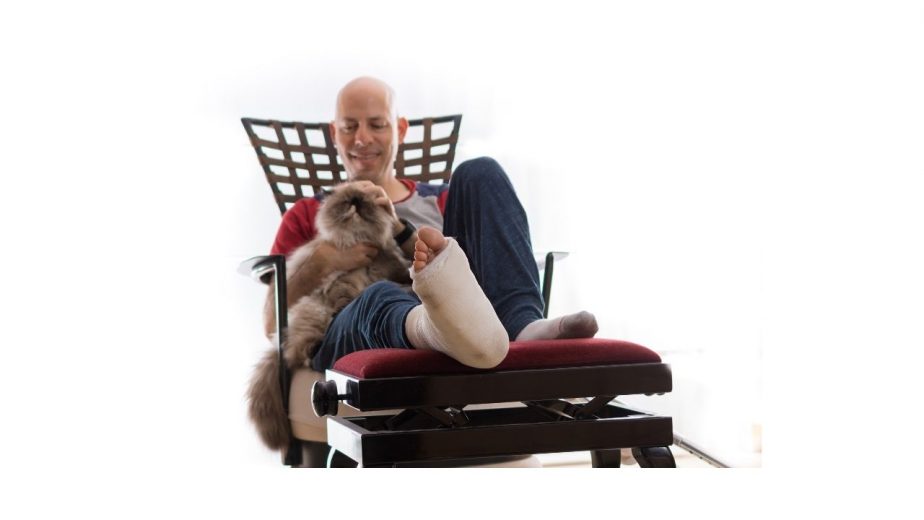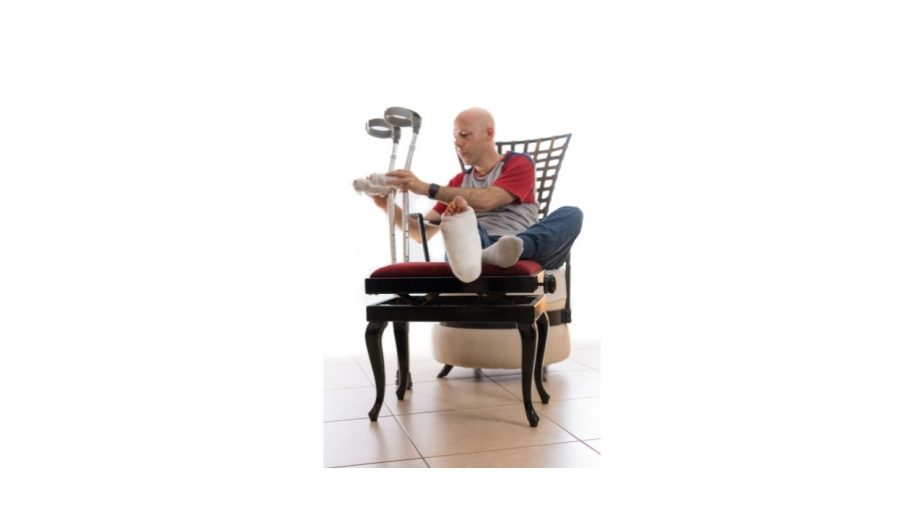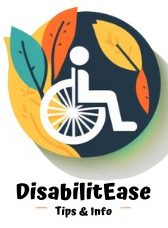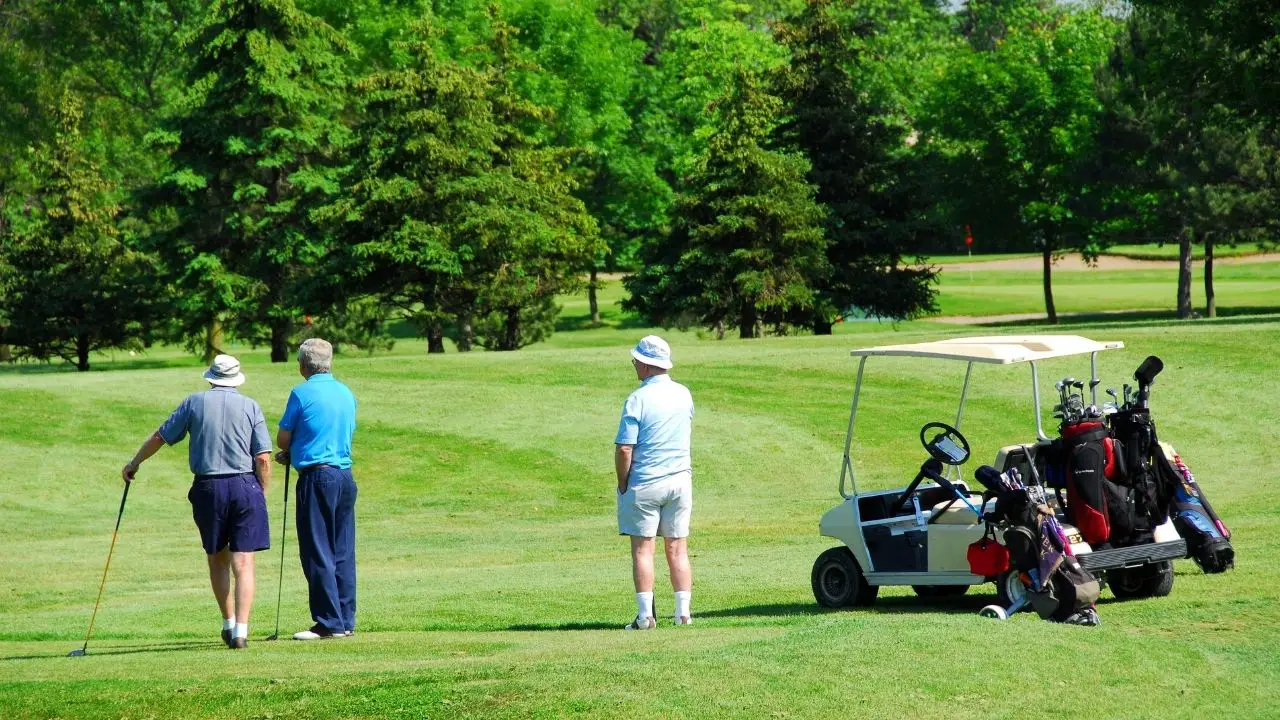Do you have a broken ankle? And do you live alone, even while having a broken ankle? Ouch, that’s not a good combination I would say, but lucky for you that’s why I’m here to help you.

Most of the time when a person breaks their ankle or their leg, it’s a very sudden impact. You fall to the ground weirdly and the next second you are in immense pain.
Here is a related article that might interest you on How To Use a Cane With a Bad Ankle?
If you are reading this article, it is more than likely that either you or someone you know has a broken ankle and lives alone. It can be hard, the pain, the sudden loss of mobility, the feeling of helplessness.
It won’t be easy, but it won’t be impossible as well. I have gathered some of the best tips if you have a broken ankle and live alone. Along with that, this article will give you a bit of an idea as to what you should prepare yourself for.
Table of Contents
7 Tips That Will Help You Live Alone With A Broken Ankle
Tip 1: Prepare Yourself Mentally
If you have just broken your ankle, you need to prepare yourself. The first week will be really painful. Most of the time the doctors in the Emergency Room will put you in a splint.
That splint will be your only source of protection, that is until you visit an orthopedist. That is likely to happen at the start of the second week.
Every little movement will bring you blinding pain, so you need to stay on bed rest and try your best to not move for anything.
Call your family or friends who live nearby and ask them up to get your painkillers and everything else you’ll need during the week, which includes the groceries as well.
And once you get all your stuff, try to have everything close by, so you Don’t have to walk or get up to get anything.
Tip 2: Everything Crutches

Ask your nurse, doctor, or physical therapist to help you with using your crutches, so you get a bit of practice before going home. Make sure they are the right size and the right fit for you. You need to be putting the pressure on your hands rather than your armpits
Also, get a (preferably) fuzzy cover for the rubber part of your crutches. You don’t want rug burns on your armpits while nursing a broken ankle. Your crutches will be your ride or die and your companion during this time, make sure you get the right one.
Some people prefer a wallet rather than a crutch because they provide more stability. If you are trying to stay away from walkers, afraid of how weak it will make you look and feel, put your pride aside.
Walkers are like wearing your soft cozy slippers after wearing stilettos all day long, compared to crutches (and whatever is the equivalent for men).
Tip 3: How To Move
When you get the crutches, it will take some time to get used to. You will obviously have to move, even if it’s to use the restroom. If you have stairs in your house, and live upstairs, try to shift downstairs temporarily.
but if you even have to use the stairs, get ready to drag your bum. It might hurt and it might be annoying, but trust me it’s a lot better than using your broken ankle. And remember to pray when getting up, you’ll need it.
If you have good upper body strength, you are good to go, but if you don’t, do not panic, you will be surprised how strong your body (and your good leg) can be.
Once you are able to put a bit of weight in your ankle, walking will be a lot easier. When walking, put your crutches forward, then your bad leg while supporting it using the crutches, and then finally the good leg.
Again, practice will be needed, but try not to fall, because you know….you have a broken ankle.
Tip 4: Stay Mentally Active
The entire healing process will take some time. Your life will stop for a while and you will be forced to take a step back from everything. This sudden change might bother, whether it’s in the early stages or the later ones.
What you can do is do your best to distract yourself. And not just by watching movies and TV shows, but actually staying mentally active. This way when you return back to your life, you will be able to adjust far more quickly.
Try DIY crafts, creating something, writing something, articles, journal, story, whatever you want. If you struggle with writing, you can try reading books. It’s also a great time to learn something. Whether it’s art or learning how to play an instrument, the sky’s the limit.
Tip 5: Stay Physically Active
No, I’m not contradicting myself. I know I have mentioned several times how to rest your broken ankle, but you can still use other parts of your body, like your hands and arms.
Just because your ankle is resting does not mean you should stop using the rest of yourself as well. This in turn might make you weaker.
You try using tools like the grip master to improve your hand muscles and to keep the blood flowing. Moreover, you can also use small weights or even books to do some bicep curls.
Apart from your hand, you will also need to keep your legs working. Doctors suggest trying walking (with the help of crutches) every few hours so blood clots don’t form. This might be tiring and exhausting, but you will thank me and your doctor for suggesting this once you recover.
Tip 6: How to Stay Clean
Bathing or taking a shower won’t be easy with a broken ankle and a cast. It’s better to load some baby wipes and wash clothes because you will have to use spot cleaning in certain cases.
Also, get baby powder once you are out of the cast and in the cast-brace, it will help with the smell and sweat. Most of the time, you will have to just wash your hair? Which can be difficult to do on your own with a broken ankle.
Therefore it’s better and easier to go to a salon and get a $5 hair wash. Your neck will thank you.
Tip 7: Always Ask For Help

Breaking an ankle is a really painful, but humbling experience. People will mostly offer help during the first week and after that, they usually think you are good to go, which is most certainly not the case.
Sometimes a broken bone leads to tissue damage as well which can take months to recover, there is only so long that you can survive on frozen food or take out. So don’t let your pride get to you, and ask for help. You can ask people to make your food, help with groceries, laundry, and other chores.
If you feel bad making others do work for you, you can always repay them one way or another in the future. Independence is good, but ego and stubbornness aren’t.
That being said, don’t rely on others completely. Do what you can on your own, without pressuring yourself too much. This way you won’t feel like such “useless” and asking for help will be a lot easier.
If you don’t want people to help you in day-to-day work, at least have your grind check up on you every few joins, especially during the first week, to see how you are doing and to get help if anything goes wrong.
Also, you have to check out my post on How Can Parkinson’s Disease Be Treated?
Having a broken ankle is really challenging and living alone with a broken ankle? That’s even worse. But you will learn a lot during this time. It will help you recognize who is your friend and who Isn’t.
Who are the people who care for you, who are willing to be there for you? You will also find the inner strength in you, one that you never knew you had.
At times you will feel so tired and hopeless, but you will get through it and come out stronger on the other end.
I hope these tips are at least somewhat helpful and make this painful time a bit easier. Remember, just because it seems impossible right now, does not mean you won’t get through it. Have faith in yourself and your strength. You can and you will conquer this challenge. Happy healing!

Hi, my name is Eddie, I am a professional trainer specializing in the elderly population and I’m also a website designer. I love training in the gym, going to the beach, traveling, and having good food.
I combined my love for sport and website designing to make “DisabilitEase” whose purpose is to help elderly and disabled people live a more full and active life, have more fun, and enjoy their unique journey despite any disability.



